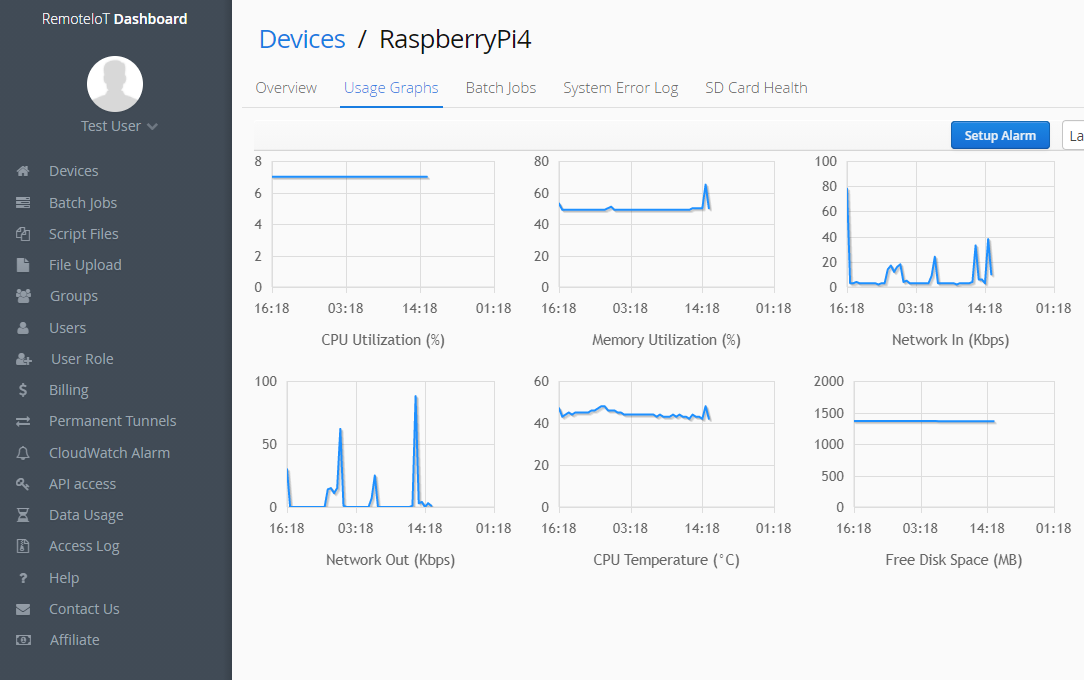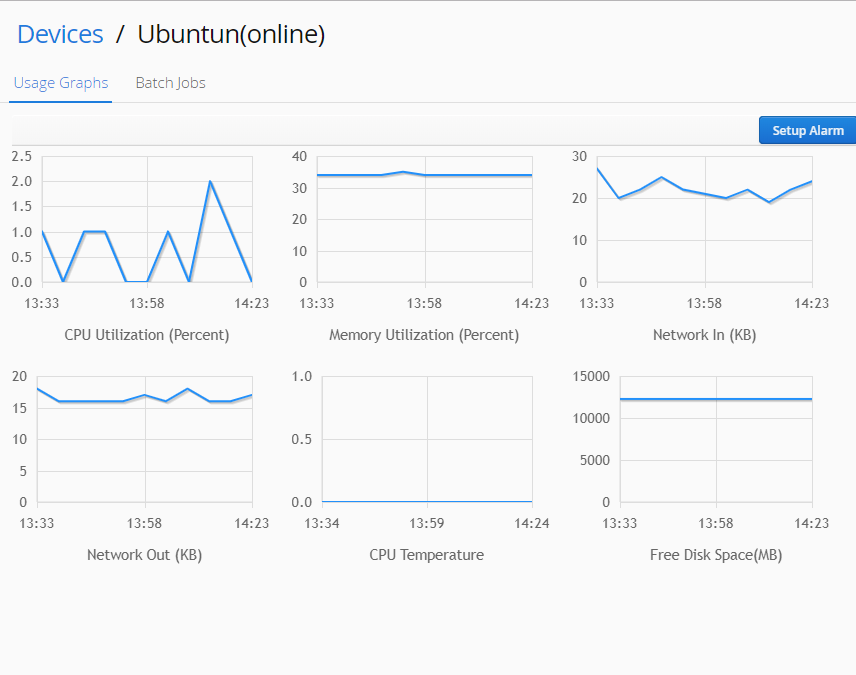Can robust real-time monitoring systems What solutions exist for remotely monitoring IoT devices behind firewalls or NAT routers effectively?

Operating personal small computer externally could be extremely effective, still such action as well introduces possible guarding vulnerabilities. To reduce existing dangers, executing suitable network shields and studying how Network Address Translation (NAT) works is critical. A firewall acts as a defense between one's Pi and the outside world, allowing you to govern incoming and outgoing traffic based on specified rules. By configuring your firewall to only accept trusted connections, you can significantly boost the security of your device.
NAT routers are another significant element in remote access security. They attribute private IP addresses to devices within your network and present a single public IP address to the outside world. This process helps to protect the internal network structure, making it less likely for attackers to locate individual devices. By exploiting both firewalls and NAT routers, you can create a secure and robust remote access solution for your Raspberry Pi.
Reaching IoT Devices from Anywhere the Firewall
The sphere of Internet of Things (IoT) offers unmatched opportunities for automation, but it also brings unique barriers. One key issue is securely reaching these devices from secluded locations. Traditional firewalls, designed to protect networks from external threats, often block access to IoT endpoints, delaying the full potential of connected apparatus. To solve this obstacle, innovative techniques are emerging.
- Online platforms allow for safe access to IoT devices, enabling users to track them from anywhere with an internet portal.
- VPN systems create a secure tunnel between the user's device and the IoT network, safeguarding data during delivery.
- Advanced Security protocols enforce strict access controls, confirming the identity of users before granting them access to specific devices.
By embracing these methods, organizations can tap into the full benefits of IoT while ensuring the privacy of their valuable data and network.
Narrowing the Divide: Accessing to Raspberry Pis Behind Network Address Translation (NAT)
Network Address Translation (NAT) can sometimes pose a hurdle when trying to use your Raspberry Pi from outside your local network. While NAT effectively masks private IP addresses, it can make direct connections complicated. Fortunately, there are several solutions to bridge this gap and enable seamless remote access to your Raspberry Pis.
- One common approach is to utilize a Dynamic DNS service, which provides a unchanging hostname for your Pi that updates automatically even when its IP address changes.
- Another option is to set up port forwarding on your router, allowing specific ports on your Raspberry Pi to be allocated to public IP addresses. This method requires careful configuration and understanding of network protocols.
- For more secure access, consider implementing a VPN (Virtual Private Network). A VPN encrypts your connection and routes it through a reliable server, masking your real IP address and providing an extra layer of protection.
By exploring these strategies and selecting the most appropriate solution for your needs, you can effectively bridge the gap created by NAT and gain reliable remote access to your Raspberry Pis, unlocking their full potential from anywhere with an internet connection.
Accessing IoT Devices Securely Behind Firewalls
Remote access related to IoT devices regularly be a challenge when confronted with firewalls. These security measures built to protect your network can sometimes curtailed your ability to control your digital devices from afar. However, comprehending the principles behind firewall operation and implementing targeted configurations can unlock a secure pathway for remote access.
One frequent approach is to form port forwarding rules. This comprises directing specific IP addresses and ports to your IoT device, effectively opening a direct connection. Another method takes advantage of VPNs (Virtual Private Networks). By initiating a secure tunnel between your device and the network where your IoT device resides, you can evade firewall restrictions and gain access to your devices remotely. It's important to remember that implementing these solutions needs a thorough understanding of your network infrastructure and security protocols to copyright the integrity and safety of your system.
- Utilize strong passwords for your router and IoT devices.
- Periodically update firmware on your router and IoT devices to patch security vulnerabilities.
- Cut off any unnecessary services or ports on your router.
Administering Firewalls for Remote Raspberry Pi Management
Remotely controlling your Raspberry Pi might be a powerful way to leverage its capabilities. However, firewalls are crucial for affirming the security of your device. Properly adjusting firewall rules facilitates you to limit incoming and outgoing network traffic, excluding unauthorized interfaces. Understanding how to adjust these settings is necessary for preserving the integrity of your Raspberry Pi.
- Apply a firewall software solution designed for Raspberry Pi. Numerous options are available, each with its own set of attributes.
- Formulate clear rules that lay out which ports should be open and which should remain disabled.
- Review the use of a VPN for an extra layer of fortification when utilizing remotely.
Consider that firewall arrangements ought to be tailored to your specific circumstances.
Essential Tips for Remotely Managing IoT Devices Through NAT
Effectively operating your Internet of Things (IoT) devices from a remote location presents unique obstacles. NAT (Network Address Translation), commonly used in home and small office networks, can complicate this process. This guide will delve into the essential steps to securely access and manage your IoT devices behind a NAT firewall.
- At the start, establish a secure connection between your remote device and your local network using a reliable VPN protocol like OpenVPN or WireGuard.
- ,Furthermore, configure port forwarding rules on your router to allow incoming packets to the specific ports used by your IoT devices. Ensure you only forward traffic to the required ports and use strong passwords for authentication.
- ,Finally, consider implementing multi-factor authentication (MFA) for added security when accessing your IoT devices remotely. MFA adds an extra layer of protection by requiring multiple forms of verification, such as a password and a unique code sent to your phone.
By observing these best practices, you can safely and securely direct your IoT devices from anywhere with an internet connection.
Fortifying Remote Access to Your Raspberry Pi
Want to manage your Raspberry Pi projects from anywhere? A firewall is essential for safely enabling remote access. It acts as a gatekeeper, blocking unauthorized requests while allowing verified requests through. By implementing proper firewall configurations, you can ensure your Pi remains secure even when accessed remotely.
Begin by identifying the services you need to expose externally. Samba are common examples. Configure your firewall to grant inbound connections on the specific ports used by these services. Remember, a well-configured firewall will only open the necessary doors, containing potential vulnerabilities.
- Use a robust firewall software package designed for Raspberry Pi, such as UFW or iptables.
- Implement strong passwords for your remote access accounts.
- Frequently review and update your firewall rules to address any changes in your architecture.
Obtain Remotely to Raspberry Pis Through Firewalls and NAT Routers
Securing your Raspberry Pi within a network environment often involves traversing firewalls and Network Address Translation (NAT) routers. This can seem daunting right off the bat, but understanding these components is crucial for safely connecting to your device from afar. This guide provides an in-depth walkthrough of common tactics for remote access, empowering you to control with your Raspberry Pi effectively regardless of its physical location.
We'll delve into the fundamentals of firewalls and NAT, outlining their roles in network security. Then, we'll explore various options for establishing secure connections, including SSH tunneling, VPNs, and port forwarding. Likewise, we'll provide practical steps and examples to help you implement these techniques on your own setup.
By mastering the art of remote access, you can unlock a world of possibilities for your Raspberry Pi projects, enabling you to monitor performance, troubleshoot issues, and even control your devices remotely.
Robust Remote Access for Your Raspberry Pi
Hoping to operate your Raspberry Pi from any location? Follow these instructions to set up secure remote access. First, select a suitable protocol like SSH or VNC. Next, configure the necessary software on your Pi. Generate a strong password and enable two-factor authentication for added security. Then, redirect the required ports on your router to your Pi's IP address. Finally, test your connection from a remote device.
- defense dangers. To minimize defense dangers. To diminish shielding dangers. To lessen safety threats. Remotely Access IoT devices Behind Firewall or NAT router To reduce
- Use firewalls to protect your Raspberry Pi. guarding issues. To diminish protection risks. To lower safeguarding threats. To lower defense risks. To curtail
- Update your software up-to-date to patch vulnerabilities.
- Review your system logs for suspicious activity.
From Home Network to the World: Remotely Controlling Your Raspberry Pi Across Firewalls
Your Raspberry Pi can be much more than just a local project. With the right setup, you can control it from anywhere in the world, regardless of firewalls or distance. This opens up a universe of possibilities - managing your home automation, accessing data remotely, or even running offsite services directly from your Pi.
While this may seem daunting at first, setting up remote access for your Raspberry Pi is surprisingly straightforward. You'll need to configure your network settings, set up a secure connection, and choose the right tools for controlling your device remotely. Here are some major factors to get you started:
* First, ensure your home network is configured properly. This includes setting up port forwarding rules to allow access to your Pi from outside your local network.* Next, choose a secure connection protocol like SSH or VPN. These protocols encrypt your communications and protect your data from sniffing.* Finally, select a remote control tool that suits your needs. Popular options include VNC for graphical access, SSH clients for text-based interaction, and cloud-based platforms for simplified management.
Once you've taken these steps, you can enjoy the freedom of controlling your Raspberry Pi from anywhere with an internet connection. This opens up a world of possibilities for learning, experimenting, and building impressive projects.
Engaging IoT Devices Beyond the Local Network: Firewalls and NAT
Extending the reach of Internet of Things (IoT) devices past the confines of your local network requires careful consideration of security mechanisms. Firewalls serve as crucial protections, meticulously scrutinizing incoming and outgoing traffic to block potential threats. Network Address Translation (NAT), on the other hand, allows multiple devices on a private network to share a single public IP address, augmenting network efficiency and shielding internal hosts.
By implementing robust firewall configurations and employing NAT effectively, you can create a secure and organized environment for your IoT ecosystem to thrive. This combination of methods ensures that your devices can securely collaborate with the wider internet while persisting protected from malicious actors.
- Apply comprehensive firewall rules to approve only trusted traffic.
- Utilize NAT to conceal internal device addresses.
- Watch network activity for any suspicious behavior.
